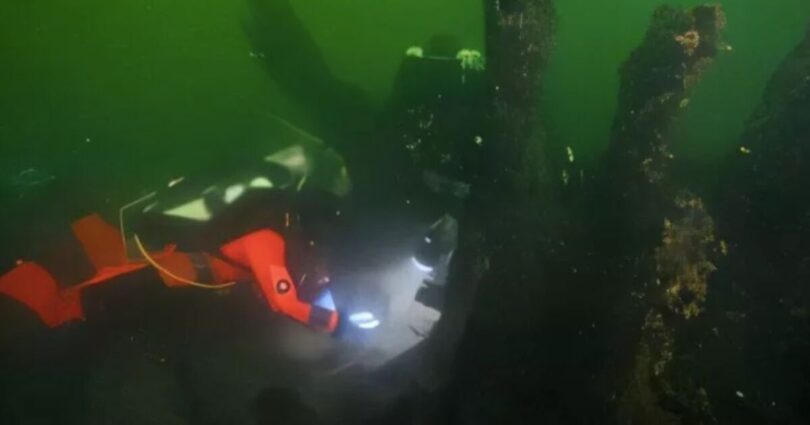Archaeologists are uncovering the mysteries of the Gribshunden, a 15th-century royal warship that met a tragic fate in 1495 after an alleged onboard explosion. The vessel, which served as the personal flagship of King Hans of Denmark and Norway, sank while anchored off the coast of Ronneby, Sweden.
At the time, King Hans was attending a political summit in Kalmar, unaware that his prized warship would soon become a piece of frozen history at the bottom of the Baltic Sea.
While local divers first located the wreck in the early 1970s, it remained largely overlooked by the archaeological community until 2001. In recent years, interest in the site has grown exponentially, leading to a series of intensive excavations.
The Gribshunden was not just a ship—it was a floating fortress, an administrative hub, and a symbol of power for King Hans. Marine archaeologist Brendan Foley of Lund University in Sweden, formerly of Tufts University in Massachusetts, emphasised the ship’s significance.
In a statement, he said: “We’ve found things on this site that have no precedent archaeologically,” Foley said in a statement. “Everything about it is fascinating.”
Unlike many other shipwrecks from the period, the Gribshunden has remained remarkably well-preserved, thanks to the unique conditions of the Baltic Sea. The low salinity of the water has prevented shipworms from destroying the wooden structure, allowing researchers to recover a treasure trove of artefacts.
The ship represents a turning point in naval warfare. It was one of the earliest artillery-equipped warships designed for long-distance voyages, marking the beginning of European colonial expansion. Vessels like the Gribshunden would later allow European powers to explore, conquer, and settle new lands, shaping the course of global history.
Despite having excavated only about 2% of the wreck so far, archaeologists have already recovered a wealth of artefacts that provide insight into life aboard the Gribshunden. Among the discoveries are early wooden crossbows, primitive handguns, and a purse filled with silver coins.
The ship also carried exotic spices, underscoring the extensive trade networks of the time. Researchers have identified cloves, ginger, peppercorns, and even large lumps of saffron—all sourced from as far away as modern-day Indonesia. This suggests that King Hans had access to some of the most valuable commodities of the medieval world.
One particularly intriguing find was a wooden tankard, made from a single piece of alder wood and painted red, with a carved crown near its base. When Foley attempted to remove it from the seafloor, the object unexpectedly floated away. “I hadn’t seen an artefact try to escape before. I had to hold it down!” Foley joked.
The tankard contained trapped gas, likely the remains of decomposed beer or mead from the time of the ship’s sinking. Although the artefacts themselves are remarkable, Foley believes their true value lies in the stories they can tell.
“Shipwrecks are like telephone calls—they’re packets of information,” he explained. “And with the right technology and the right experts and insights, we can eavesdrop on these ancient telephone calls and reconstruct that conversation.”
The ongoing excavation of the Gribshunden is expected to yield even more discoveries, shedding light on naval warfare, trade, and daily life in the late 15th century.
Source link








